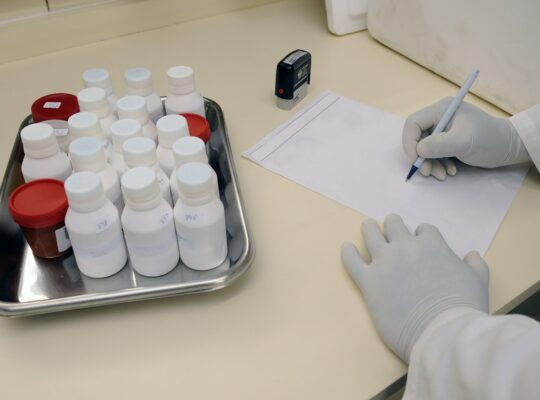Pharm D 3rd Year Pharmaceutical Jurisprudence Question Bank
Chapter 1– Pharmaceutical legislation
5 marks questions
1. Give an account of pharmaceutical legislation in India.
2. Describe the recommendations made by the Chopra committee
3. Write contributions of Joseph Bhore committee to the pharmacy profession
4. Write final recommendations of Drug Enquiry Committee.
5. Discuss pre-independence pharmaceutical legislation of India
2 marks questions
1. Give the recommendations of the ‘Hathi Committee’
2. Give future trends in pharmaceutical legislation 3. What is CDSCO
4. Give two recommendations made by Bhatia Committee
5. List four key functions of CDSCO
6. Give two recommendations made by the Drug Enquiry Committee
7. Give the significance of Drug Enquiry committee.
8. Justify the repealing of the ‘dangerous drugs act’ into Narcotics and Psychotropic substances act’.
9. State importance of CDSCO.
10. State Indian drug Policy
Chapter 2- principle & significance of professional ethics
5 marks questions
1. Discuss the code of ethics for pharmacists in relation to their trade.
2. Discuss the code of ethics for pharmacists in relation to their job.
3. Define Code of Ethics. Explain Receiving and Handling of prescription by a pharmacist
4. Discuss the code of ethics for pharmacists in relation to their medical profession.
5. Briefly mention the code of ethics for pharmacists framed by PCI.
2 marks questions
1. What are the limitations of professional activity for a pharmacist as per the code of Pharmaceutical ethics
2. State Clandestine Arrangement
3. Describe Professional vigilance as Code of Pharmaceutical Ethics
4. Enlist Code of Pharmaceutical Ethics in relation to his profession
5. Enlist the Code of Pharmaceutical Ethics in relation to the medical profession.
6. Justify pharmacists to be liaisons with the public as per the code of pharmaceutical ethics.
7. How should be ‘conduct of pharmacy’ as per the code of pharmaceutical ethics.
8. Brief about’ Professional Vigilance’ as stated under the code of pharmaceutical ethics.
9. How a pharmacist should follow’ fair trade practice’ as per the code of pharmaceutical ethics.
10. Brief ‘Apprentice Pharmacist’ as code of pharmaceutical ethics
Chapter 3- Drugs & cosmetics Act & its rules
10 marks questions
1. What are the precedents and subsequent conditions for grant of license to manufacture of drugs specified in schedule C, C1, and X.
2. Write the qualifications, duties, and responsibilities of the drug inspector. Explain the procedure for taking samples by the drug inspector.
3. Describe the good manufacturing practices to be followed as per Schedule M specified under the Drugs and Cosmetics Act 1940.
4. Explain various provisions of Schedule Y as per the Drugs and Cosmetics Act 1940. 5. What are the precedents and subsequent conditions for grant of license to manufacture of drugs specified in schedule C, C1, and X.
5 marks questions
1. Give the labeling requirements and write the specimen label for ophthalmic preparation
2. Mention the classes of Drugs Prohibited to be imported into India
3. Give the qualification required for the appointment of a Government analyst. Add note on his duties.
4. Name different types of licenses for the retail and wholesale of drugs
5. Give the labeling requirements and write the specimen label for ophthalmic preparation.
6. Give licensing conditions for the import of drugs other than CC1 and X.
7. Explain Central Drugs laboratory under D &C Act.
8. Duties and responsibilities of drug inspector.
9. Describe the procedure for import of drugs for examination, test, and analysis
10. Write the Qualification and Duties of Government Analyst.
11. Explain in detail about Schedule N as per the D&C Act.
12. What are the conditions for General and restricted licenses for the sale of drugs?
13. Give labeling requirements and specimen label for schedule X drugs
14. Define misbranded and adulterated drugs?
15. What are loan licenses and repacking licenses as per the D &C act. Explain their licensing
conditions.
2 marks questions
1. Define Schedule J. Give two examples.
2. Define Loan licenses.
3. Define Schedule FF. Give two examples.
4. Give labeling requirements for schedule H drugs.
5. Define Schedule P. Give two examples.
6. Give labeling requirements for schedule G drugs.
7. Define Schedule X. Give two examples.
8. Define Repacking licenses.
9. Define Schedule J. Give two examples.
10. Define Loan licenses.
11. Define Schedule U& V.
12. Give labeling requirements for Schedule H drugs.
13. Define Schedule P& Jasper D &C act.
14. Give two examples of permitted colors as per the D &C act.
15. Write specimen label of Schedule H drug for parenteral administration.
16. Define cosmetics under the D&C Act
17. Define ‘patent and proprietary medicines’ as per the D&C act.
18. Give the functions of the Drug Consultative Committee.
19. Give labeling requirements of patent and proprietary medicines as per the D&C Act.
20. Define Schedule Y as per the D&C act.
Chapter 4- Pharmacy Act
10 marks questions
1. Describe in detail the constitution of the Pharmacy Council of India. Discuss in detail education regulation.
2. Write in detail about the constitution and functions of the state and joint state pharmacy council.
3. Describe the constitution and functions of the Pharmacy council of India.
4. Describe the constitution of the State pharmacy council. Explain the preparation of ‘first register and ‘subsequent register’
5. Explain the Registration of pharmacists detailing about first register, qualifications for entry into the first register, subsequent register, and removal of name from the register as per the Pharmacy Act.
5 marks questions
1. Define the terms first register and subsequent registers. How the first register is prepared?
2. What are the education regulations and how they are implemented as per Pharmacy Act?
3. Write the constitution of the Joint State Pharmacy Council. Enumerate its functions
4. Give the constitution of the Pharmacy Council of India as per the Pharmacy Act.
5. Discuss approval and withdrawal of approval of institutions providing course of study and examination according to the Pharmacy Act.
2 marks questions
1. List out the Ex-Officio Members of PCI.
2. Define “Registered Pharmacist”.
3. Give the objectives of the Pharmacy Act.
4. Mention the grounds on which names of registered pharmacists can be removed.
5. Mention the qualifications necessary for entering the name into ‘first register’.
6. Enumerate two functions of PCI Inspector
7. Explain the approval of foreign qualification by PCI.
8. What Punishment is provided under the pharmacy act for falsely claiming to be a registered pharmacist?
9. How to Restore to the register as per Pharmacy act.
Chapter 5- Medicinal & Toilet Preparation Act 1955
10 marks questions
1. Give the design of a bonded laboratory. Discuss in detail the manufacturing of alcoholic preparations in the bonded laboratory.
2. What is meant by “Manufacture in Bond? Discuss the conditions to be followed before and after obtaining a license for manufacture in bond.
3. Discuss the procedure to be followed for manufacturing medicinal preparations without bond.
4. Define manufacturing in bond. Outline the procedure to be followed in obtaining a license for manufacture in bond including the conditions that are to be fulfilled.
5. Explain Warehousing of alcoholic preparation as per Medicinal and Toilet preparations act. How alcoholic goods are transported from one warehouse to another.
5 marks questions
6. Give offenses and penalties for medicinal and toilet preparations act
7. What are the requirements of a bonded laboratory?
8. Discuss the procedure to be followed for manufacturing medicinal preparations without bond.
9. Explain Export of Alcoholic preparations under bond
10. Explain the warehousing of alcoholic preparations.
2 marks questions
11. How do you procure rectified spirit as per provisions of the Medicinal and Toilet Preparations Act?
12. How to dispose of recovered alcohol as per provisions of Medicinal and Toilet Preparations Act.
13. Define ‘restricted preparations’ under the Medicinal and Toilet Preparations Act
14. Define ‘London proof spirit’ under the Medicinal and Toilet Preparations Act.
15. Define ‘rectified spirit’ under the Medicinal and Toilet Preparations Act.
Chapter 6- Narcotic Drugs & Psychotropic Substances Act
5 marks questions
1. Define ‘Manufactured Drugs’ and ‘Controlled Substances’ as per the NDPS Act.
2. Write the constitution and functions of the Narcotic and Psychotropic consultative committee
3. Define the term ‘Opium Derivatives’ and ‘Coca derivatives’ under the NDPS Act
4. Explain the manufacture, Sale, and export of Opium
5. Discuss the cultivation and production of opium.
2 marks questions
1. What is the punishment specified for the illegal cultivation of the coca plants.
2 Write the constitution and functions of the Narcotic and Psychotropic consultative committee
3. Define ‘Psychotropic substances’ as per the NDPS Act
4 What is the punishment specified for allowing the use of premises, vehicles, etc. for the commission of an offense under the NDPS act.
5 Give four examples of psychotropic substances.
6 What are the objectives of the NDPS act.
7 Define the term coca derivatives under NDPSAct.
8 Differentiate between Poppy straw and poppy concentrate
9 Define Narcotic Drug as per NDPSAct.
10 Define Manufactured Drug as per the NDPS Act.
11 What is the punishment specified for allowing the use of premises, vehicles, etc. for the commission of an offense under the NDPS act?
12 Define controlled substance
13 What is the punishment specified for the illegal cultivation of coca plants?
14 Give four examples of Psychotropic Substances under the NDPS act
15 Define illicit traffic as under the NDPS Act.
Chapter 7- Drug & Magic Remedies Act
5 marks questions
1. Describe the classes of advertisements exempted conditionally under the Drugs and Magic Remedies Act.
2. Define magic remedy. Write the classes of advertisements prohibited under the D&MR Act.
3. Define ‘advertisement’. Write the classes of advertisements exempted under the D&MR Act.
4. Define ‘Drugs’, ‘Advertisements’, and ‘Magic Remedies’ as per the Drugs and Magic Remedies Act.
5. What are the objectives of the Drugs and Magic Remedies Act. Give offenses and penalties under the act.
Chapter 8 & 9- Essential commodities Act relevant to DPCO & National Drug Pol
2 marks questions
1. Define ‘ceiling price’ as per DPCO.
2. Write objectives of National Drug Policy
3. How retail price of the formulation is calculated as per DPCO
4. How MAPE is calculated as per DPCO
5. What is MAPE as described in DPCO
6. How do you calculate the retail price for formulations as per DPCO?
7. What is the ceiling price as per DPCO
8. Explain the term MAPE. How it is calculated.
9. Describe facilities to be maintained for experimentation animals under CPCSEA guidelines.
10. Name the Authorities under DPCO.
11. Write Objectives of DPCO
Chapter 10- Prevention of cruelty to animals act
5 marks questions
1. Write the objectives of the ‘Prevention of cruelty to animals act’. What are the parts of CPCSEA guidelines?
2. Define ‘Cruelty to animals’. Explain provisions for breeding and stocking of animals as per this act.
3. Describe facilities to be maintained for experimentation animals under CPCSEA guidelines
4. Give the constitution and function of the Institute Animal Ethics(IAE) Committee
5. How are experimental animals to be handled during and after experiments as per
CPCSEA guidelines?
2 marks questions
1. Under what conditions an animal for the experiment is sacrificed as per CPCSEA guidelines?
2. Write the objectives of the Prevention of Cruelty to Animals Act.
3. Define CPCSEA.
4. Give the constitution of Institutional Animal Ethics Committee
5. What are the functions of the Institutional Animal Ethics Committee?
Chapter 11- Patent & design Act
10 marks question
1. Name the types of patents granted under the patents act. Give the procedure for obtaining the patent.
2. Define Patent. List the inventions that are not patentable within the meaning of the Patent Act. Give offense and penalties under this Act.
3. Explain the procedure of application of patent including revocations of patents under the Indian Patent Act.
4. What is the Patent Cooperative Treaty. Explain the Patent of addition and restoration of Lapsed patents under the Patent Act.
5. Describe the Publication and examination of the application for patents. Give offenses and penalties patents act.
5 marks question
1. Define the term Patent as per the Patent act. Which inventions are not patentable under the Act.
2. What is the Patent of addition? What are the rights of patentees & co-owners of patents?
3. Explain the procedure for revocation of patents.
4. Enumerate the types of patents. What are the criteria for inventions to be patentable?
5. Define Invention as per the patent act. Enlist the steps for obtaining a patent.
2 marks questions
1. What are the rights of the owner of a patent under the Patent Act?
2. How restoration of lapsed patent can be done?
3. Define ‘exclusive license’ as per the patent act.
4. What are the rights of the patentee as per the Patent Act.
5. Define ‘priority date’ in filing the patent.
Chapter 12- Prescription & Non prescription products
2 marks questions
1. What are OTC products?
2. Give two examples of diagnostic aids.
3. Give two examples of surgical aids
4. What are prescription drugs. Give two examples
5. What are Non-prescription drugs. Give two examples.
6. What are diagnostic aids. Give one example.
7. Name any four surgical accessories
8. Distinguish between prescription and non-prescription products
9. What are OTC products. Give two examples.
10. Give the procedure for disposal of expiry drugs.







